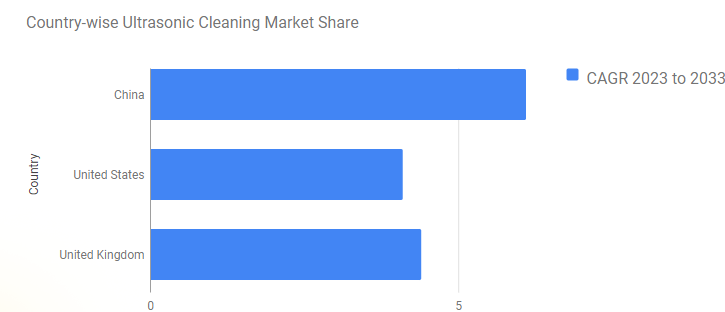Ultrasonic cleaning technology transcends the limitations of traditional cleaning methods. It utilizes high-frequency sound waves to create microscopic vibrations in a cleaning solution, dislodging even the most stubborn contaminants from intricate surfaces. This powerful and versatile technology caters to a vast array of applications, and the ultrasonic cleaning market is poised for significant growth driven by several exciting opportunities.
A Deeper Clean: Applications of Ultrasonic Cleaning
Ultrasonic cleaning finds applications in various industries due to its ability to clean objects thoroughly and delicately:
- Manufacturing: Ultrasonic cleaners are used to remove grease, machining fluids, and other contaminants from precision parts in automotive, electronics, and aerospace industries.
- Medical and Dental: Ultrasonic cleaning effectively disinfects and sterilizes medical instruments, dental tools, and delicate medical components.
- Jewelry and Optics: Ultrasonic cleaners are ideal for removing dirt, tarnish, and fingerprints from valuable jewelry and cleaning sensitive optical lenses.
- Electronics: Printed circuit boards, electronic components, and intricate assemblies benefit from ultrasonic cleaning for removing flux residues and other contaminants.
- Firearms and Weaponry: Ultrasonic cleaners provide a safe and effective way to remove gunpowder residue, lead deposits, and other contaminants from firearms and weaponry.
Get Exclusive Sample Copy of the Report: https://www.futuremarketinsights.com/reports/sample/rep-gb-17675
A Market Poised for Growth: Opportunities on the Horizon
The ultrasonic cleaning market is experiencing a boom driven by several key trends:
- Focus on Miniaturization: As electronic components and medical devices continue to shrink in size, traditional cleaning methods become ineffective. Ultrasonic cleaning offers a solution for cleaning intricate parts without damaging them.
- Growing Demand for Precision Cleaning: Industries like aerospace and electronics require ultra-clean components for optimal performance. Ultrasonic cleaning ensures a high level of cleanliness essential for these applications.
- Stringent Environmental Regulations: Ultrasonic cleaning often utilizes water-based cleaning solutions, reducing reliance on harsh chemicals and aligning with stricter environmental regulations.
- Advancements in Technology: Developments in ultrasonic cleaning technology, such as higher frequencies and multi-frequency cleaning, are leading to more efficient and effective cleaning processes.
- Rising Automation in Manufacturing: Integration of ultrasonic cleaning systems with automated production lines streamlines the cleaning process and improves overall production efficiency.
The global ultrasonic cleaning market is poised for significant growth, with projected revenues reaching USD 1.9 billion in 2023 and USD 3.2 billion by 2033, demonstrating a steady compound annual growth rate (CAGR) of 5.3%.

Challenges and Considerations
The ultrasonic cleaning market also faces some challenges:
- Understanding Application Needs: Selecting the right type of ultrasonic cleaner, cleaning solution, and operating parameters is crucial for optimal cleaning results and avoiding damage to delicate parts.
- Material Compatibility: Not all materials are suitable for ultrasonic cleaning. It’s essential to ensure compatibility to prevent damage to the object being cleaned.
- Cost Considerations: While ultrasonic cleaning offers significant benefits, the initial investment in equipment and ongoing maintenance costs can be a factor, particularly for smaller businesses.
Get Full Report Now: https://www.futuremarketinsights.com/checkout/17675
